Art & Culture
[People of Hanoi] The abstract artist
An upcoming exhibition at the Vietnam National Fine Arts Museum will showcase the work of Polish artist Marta Kisiliczyk
Published
4 years agoon

There is a defining point moment in every artist’s life and for Marta Kisiliczyk it was buying a live chicken from a small village outside Krakow in the depths of winter in 2003. She had recently been the only person on her art course, a Master’s degree at a leading art academy in Poland, to have her dissertation proposal rejected. Inspired by a short trip to the countryside, she wanted to paint chickens. Her professor had been brusque, telling her: “You know nothing about chickens. You are from the city not the country. You didn’t grow up with chickens. You have no connection with them. No. It’s not authentic. Find something else.”
Deeply upset and not wanting to give up on the idea, Kisiliczyk trudged through the snow knocking door-to-door at a series of farmer’s houses until an old babushka sold the young artist a hen. She soon sought out a book on how to rear chickens, built a coop in her studio and spent the best part of a year living with the chicken, who she named Lukrecja Rosolinska, in a small townhouse in the center of the Polish cultural capital. Seeing her commitment, her professor had no choice but to relent (“You’re crazy, but go ahead”).

Lukrecja Rosolinska posing 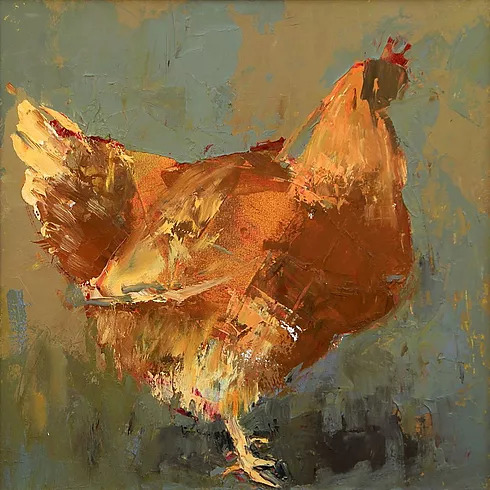
Lukrecja Rosolinska as painted by Marta Kisiliczyk
I wanted to show that you could paint anything, even just a ‘stupid’ chicken, but also you have to connect with it somehow, and that’s what I got with her.”
“And then we started it, and she [the chicken] loved it. She wasn’t like any ordinary chicken. She was born to be famous. She was always posing, especially when I started painting her,” Kisiliczyk says. “You can tell from my paintings how she looked. And then when I had my dissertation I wrote about what it was like to live with her. She was very noisy. Laying eggs every morning. Waking up the whole neighborhood at 6 a.m.”
Kisiliczyk credits her time living with Rosolinska as having a profound impact on her work, believing it to be the genesis for her understanding the importance of being bonded to what she paints. “I had always struggled with finding the right subject but now it comes quite naturally. It started with the chicken, but now it comes more from plants and nature and things and landscapes. This is what I feel closest to. So yeah, she inspired me to find out what it was that I wanted to paint,” Kisiliczyk tells Chào. “It was an important moment for me as an artist. Very important. I wanted to show that you could paint anything, even just a ‘stupid’ chicken, but also you have to connect with it somehow, and that’s what I got with her.”

We meet Kisiliczyk at her home, a large colonial townhouse off Au Co in central Hanoi, where she lives with a group of friends and musicians. The area just inside the main entrance serves as her studio, which is splashed with paint and cluttered with her latest paintings. A lively barbeque is going on outside. There’s a dog called Uys, a cat kitten called Brush. People come and go–a violinist, an axe thrower. Two woman are doing a baroque ballroom dance. A beautiful young woman is discussing neuroscience while eating a boiled potato. A brother and sister (not her own) she lives with hurl mock insults at each other. It is a fun environment, bohemian almost, and provides the relaxed home life that Kisiliczyk says she needs to create her art.
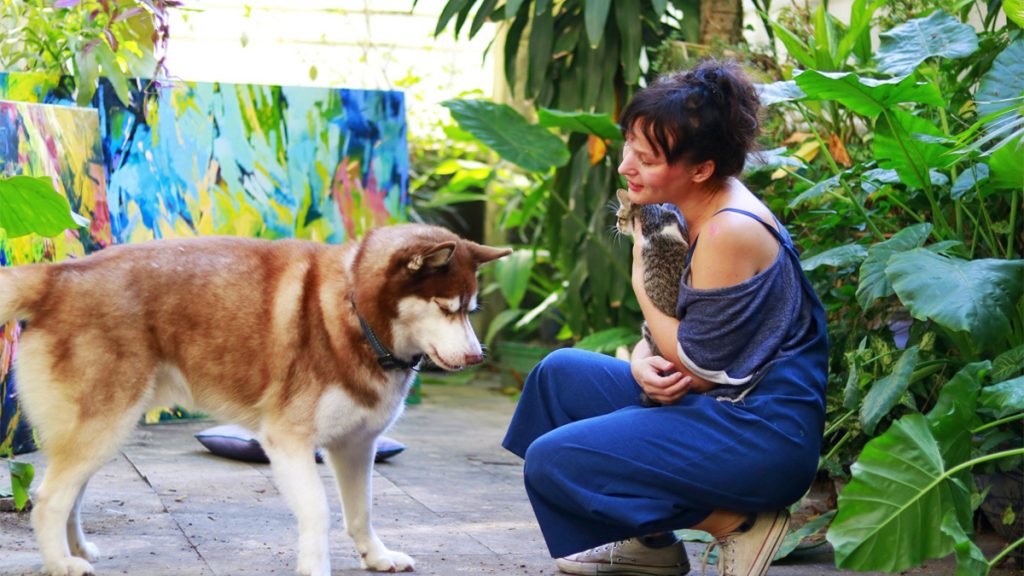
“This is the perfect place for me to live. I am purely expressing my emotions but sometimes, well, I need to be in a happy place generally to paint. I am not one of these artists that can create great work when they are depressed, even though I through go different emotions when I am painting,” she says. “Frustrated, a little angry, romantic, or whatever. It is not even that I am trying to put it on the canvas. It just happens. Sometimes my paintings are a bit softer, but other times they can be a lot more intense.”
“I work in waves. Until five in the morning until my eyes are vibrating, and I look at everything very intensely and I can feel the muscles in my eyes. I can see light coming through the leaves.”
And yes, there is an intensity to Kisiliczyk’s work that’s hard to describe. Fierce, vibrant slews of color seem to burst, no, explode from the canvas. They can be joyous. Exciting. Some border on the violent even. They strike up myriad emotions, but one thing you cannot do is ignore them. They draw you in and grab your attention with their flamboyance, all striking slashes of popping pinks and jungle greens. Leading art critics have compared her favorably to Van Gogh and Willem de Kooning. These seem notable comparisons as the Dutch appear to like her paintings more than—or as much as—anyone else (“My paintings can be found on the walls of many homes in Amsterdam”).

The Pole is an abstract-impressionist working in the most vivid colors: her earlier work, such as South African landscapes, far more impressionistic, her later work, inspired by Vietnamese nature, much more abstract. Those looking to find specific stories in her work might be a little disappointed, her paintings conveying feeling over explanation. “I paint with emotions. The most important thing for me is not meaning it is emotion. I don’t need to say anything. I leave that for books. I do not tell stories. I just want you to stand in front of my paintings and feel something. There is no message,” she says.

A painting from Marta’s series of South African landscapes 
Marta’s earlier work was far less abstract
Kisiliczyk’s upcoming exhibition “Transformation” opens, ominously on Friday 13th, at the Vietnam National Fine Arts Museum this month, and when Chào visits her she is in the midst of a flurry of activity to get everything just right. Spattered in flecks of paint, her eyes look tired and she has had little sleep having been up painting until the early hours. She’s running on adrenaline, painting until she can barely stand, sleeping and then back to painting again. An exhibition at this prestigious national gallery clearly has her excited but she says she always paints in energetic manic bouts before putting down the paints for months—even years—at a time.
“I can’t paint every day. I work in waves. Until five in the morning until my eyes are vibrating, and I look at everything very intensely and I can feel the muscles in my eyes. I can see light coming through the leaves,” she says. “But then for a month or two after that I need to rest or there is no way I could do it. I paint with so much passion and intensity I couldn’t do it long term every day. I need that break until I am ready.”
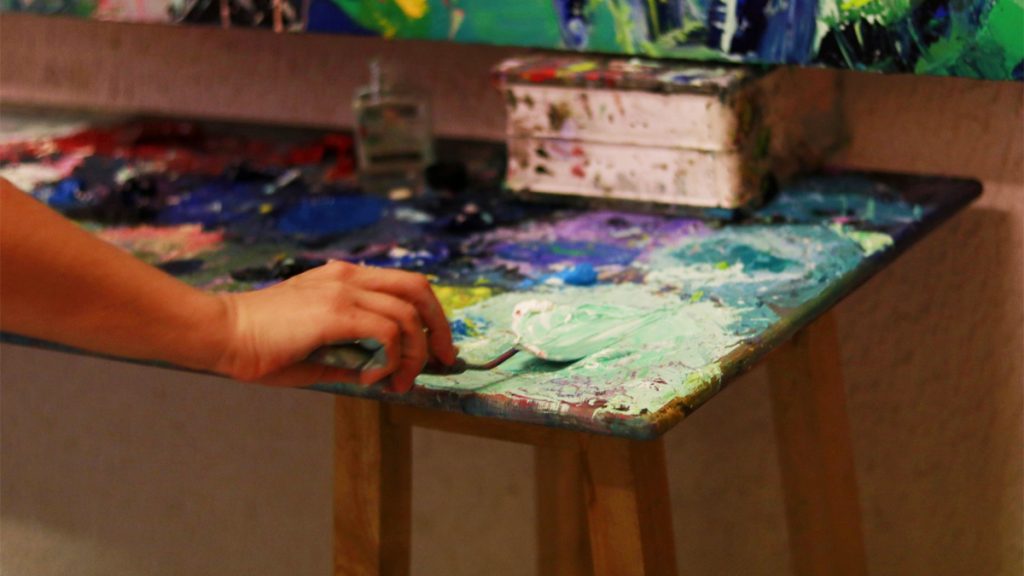
Though the upcoming exhibition is inspired by Vietnamese nature, it opens under the patronage of the Polish Embassy and is billed as a celebration for the 70th anniversary of the establishment of diplomatic relations between Poland and Vietnam. Originally she was going to open her exhibition at a more modest gallery, but the embassy had bigger ideas.
“I have a Slavic soul, and there is always this kind of odd darkness, and mystery.”
“Usually you have to apply a year in advance and be very established, and I am new here in Hanoi so I would never think about applying. I was supposed to be doing a smaller exhibition in Ciputra and invited the Polish Embassy. They said they would be honored to take patronage,” she says. “A few days later, the ambassador and his wife came to my studio for a coffee and discussed my paintings. They said ‘Marta we want to take patronage of your exhibition, but we want you in a more prestigious gallery. We have already shown it to the national gallery and after one day they said yes.’ Now I have two weeks to get everything ready.”
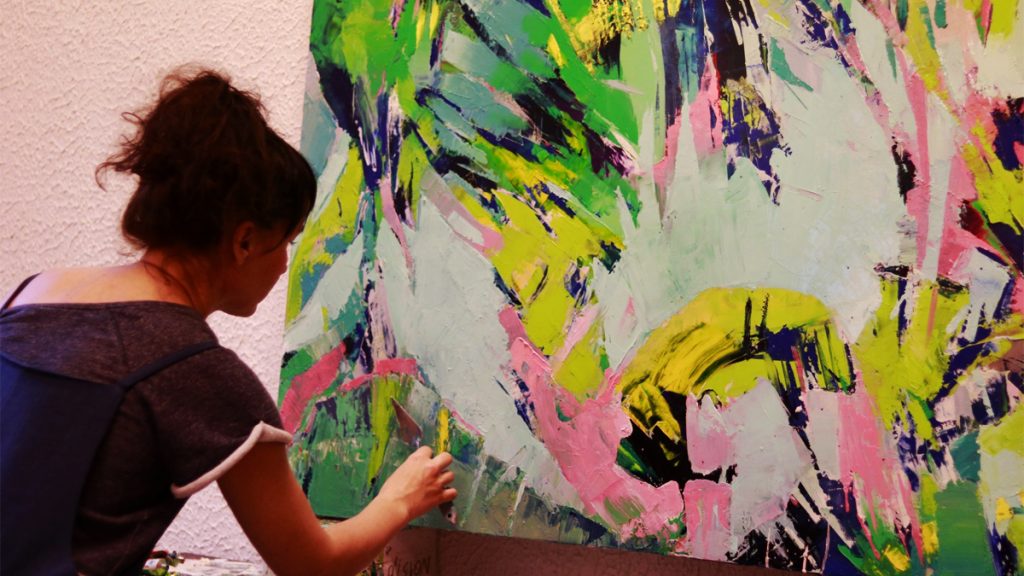
On being asked how being Polish affects her work, there is a moment of silence before she answers. “I have a Slavic soul, and there is always this kind of odd darkness, and mystery. I am contradictory. I have this dark side. Depth. Intensity. There’s always this traumatic music and theatre. Yes, I am Polish,” she laughs.
She’s right. There is something contradictory about her. Occasionaly she seems brooding and serious, philosophical even, and then seconds later innocent and vivacious, like a young girl without a single care. After selling dozens of paintings, picking up a several prizes for her awards in Europe (including a first prize from the International Confederation of Art Critics in 2018), and now an exhibition at a national gallery in Vietnam, Chào wonders if she can keep her feet on the ground. Is she humble? She hesitates for a second: “I have my moments!” And then she jumps up again, rushing back to her studio to paint some more.
Transformation runs for one week from Friday 13, November 2020
Vietnam Fine Arts Museum
66 Phố Nguyễn Thái Học, Điện Bàn, Ba Đình
Photos taken by Minh Anh
“People of Hanoi” explores intimate stories and lives behind the bustle and hustle of the capital city.
You may like
-


[Review] ATH Invisible Event: Blocked Hanoi!
-
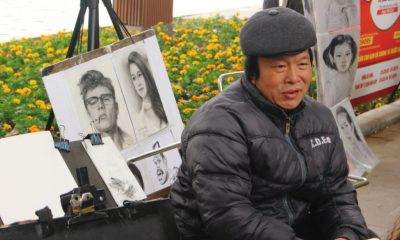

A portrait of an artist by Hoan Kiem Lake
-
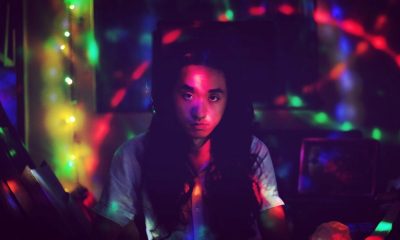

[Exhibition] “2020- Life in Times of a Global Pandemic”
-
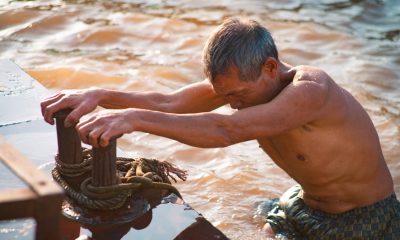

Life in Hanoi’s floating fishing village
-
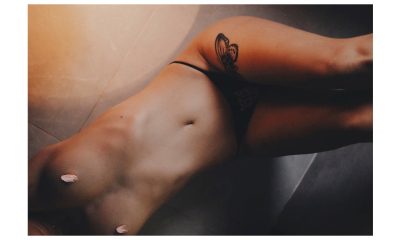

[Exhibition] Sōmatika: Being naked is beautiful
-


[People of Hanoi] The Female Warrior
-
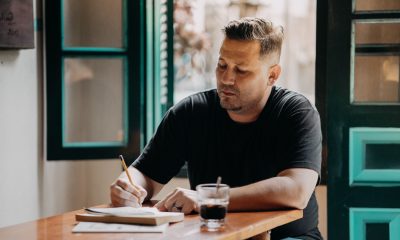

[People of Hanoi] The expatriated poet
1 Comment